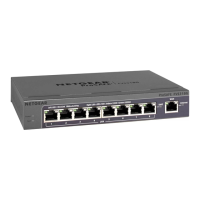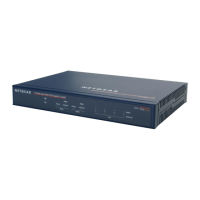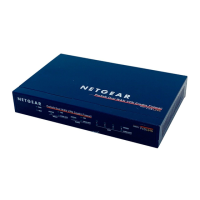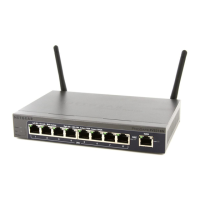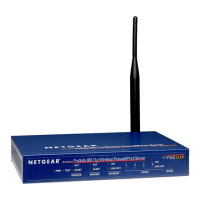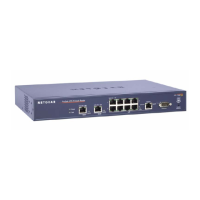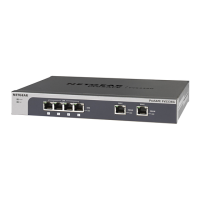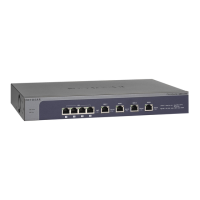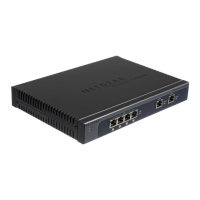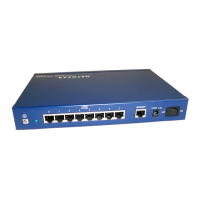Manually Configuring Internet and WAN Settings
76
ProSecure Unified Threat Management (UTM) Appliance
Configure Network Address Translation (All Models)
Network Address Translation (NAT) allows all PCs on your LAN to share a single public
Internet IP address. From the Internet, there is only a single device (the UTM) and a single IP
address. PCs on your LAN can use any private IP address range, and these IP addresses
are not visible from the Internet.
Note the following about NAT:
• The UTM uses NAT to select the correct PC (on your LAN) to receive any incoming data.
• If you have only a single public Internet IP address, you need to use NAT (the default
setting).
• If your ISP has provided you with multiple public IP addresses, you can use one address
as the primary shared address for Internet access by your PCs, and you can map
incoming traffic on the other public IP addresses to specific PCs on your LAN. This
one-to-one inbound mapping is configured using an inbound firewall rule.
Changing the WAN mode from classical routing to NAT causes all
LAN WAN and DMZ WAN inbound rules to revert to default
settings.
To configure NAT:
1. Select Network Config > WAN Settings > WAN Mode. The WAN Mode screen
displays (see Figure 43 on page 78).
2. In the NAT (Network Address Translation) section of the screen, select the NAT radio button.
3. Click Apply to save your settings.
Configure Classical Routing (All Models)
In classical routing mode, the UTM performs routing, but without NAT. To gain Internet
access, each PC on your LAN needs to have a valid static Internet IP address.
If your ISP has allocated a number of static IP addresses to you, and you have assigned one
of these addresses to each PC, you can choose classical routing. Or, you can use classical
routing for routing private IP addresses within a campus environment.
To view the status of the WAN ports, you can view the Router Status screen (see View the
System Status on page 458).
Changing the WAN mode from NAT to classical routing causes all
LAN WAN and DMZ WAN inbound rules to revert to default
settings.
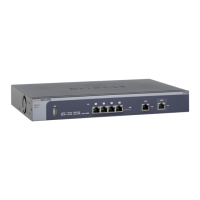
